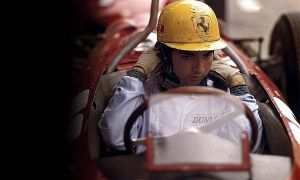BACK TO THE PUSHROD SUSPENSION
This will not come as a major surprise; Ferrari has ditched its pullrod suspension design (used on the past four Maranello cars) for a more conventional pushrod layout. In this setup, the wishbone – which basically pushes the springs and dampers instead of pulling them – connects the lower part of the wheel to the upper section of the chassis.
Admittedly, the pushrod design raises the car’s centre of gravity and the wishbone’s position is not ideal either. But these theoretical disadvantages have not deterred all other teams from using a layout that is lighter, more flexible in terms of setup, and offers better access to the mechanics.
One will also notice that Ferrari has kept a Mercedes-like conjoined lower wishbone design, though the Scuderia’s interpretation of the concept is not as radical as the double world champions’. The blown wheel hubs have also been carried over from last year.
In order to close the gap to Mercedes, the clear benchmark over the past two seasons, Ferrari has decided to forfeit several defining features of its 2015-spec SF15-T and align itself with the competition.
Last year’s recovery was pretty impressive, though the car was an evolution of the troublesome F14T and addressed its major weaknesses. This time however, the Scuderia is breaking away from concepts it had relied on since 2012 and 2014. Chief designer Simone Resta was quick to label this year’s package “very, very ambitious”.
With technical director James Allison and chief aerodynamicist Dirk de Beer chief once again in charge of leading and overseeing the new design, the SF16-H must be able to challenge the Mercedes W07 and fight for the title, as tasked by Ferrari president Sergio Marchionne. The bar has been set very high indeed.
A closer look at the Williams FW38
Keep up to date with all the F1 news via Facebook and Twitter








